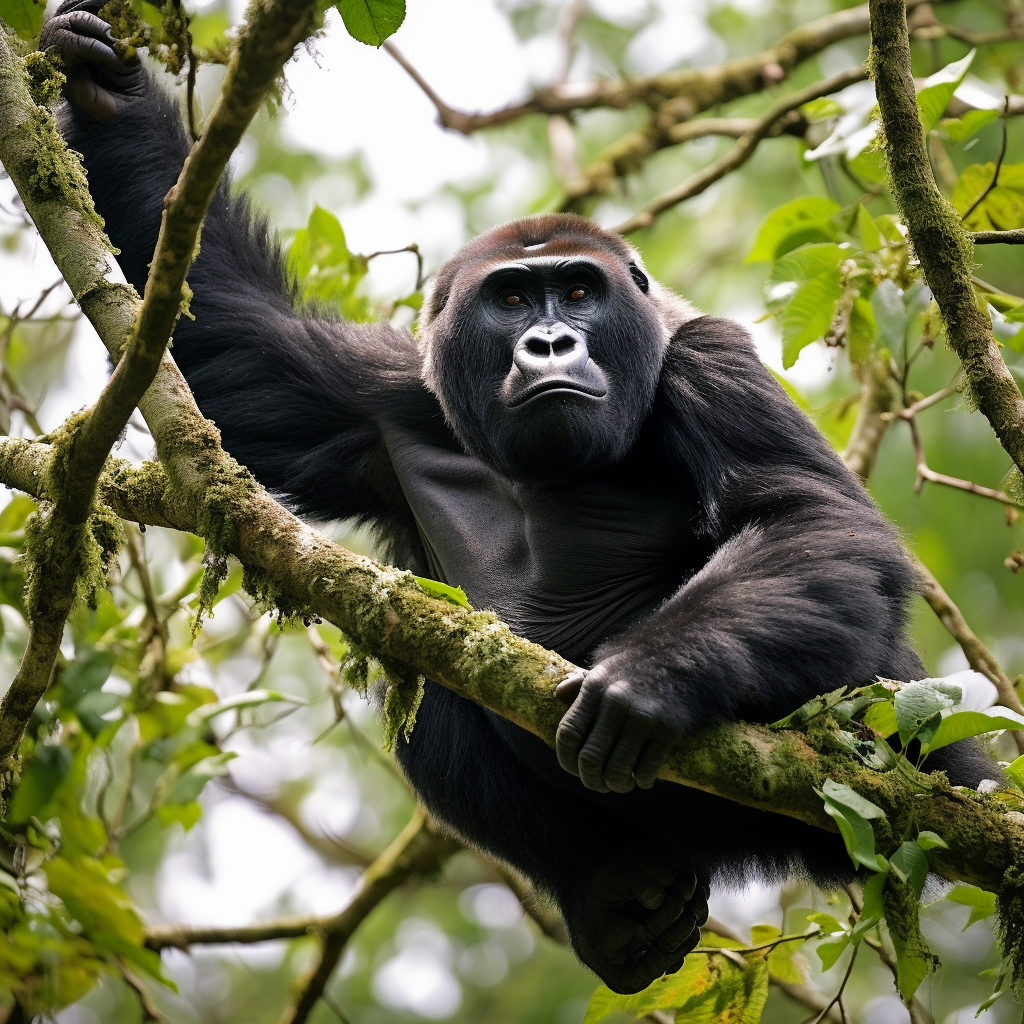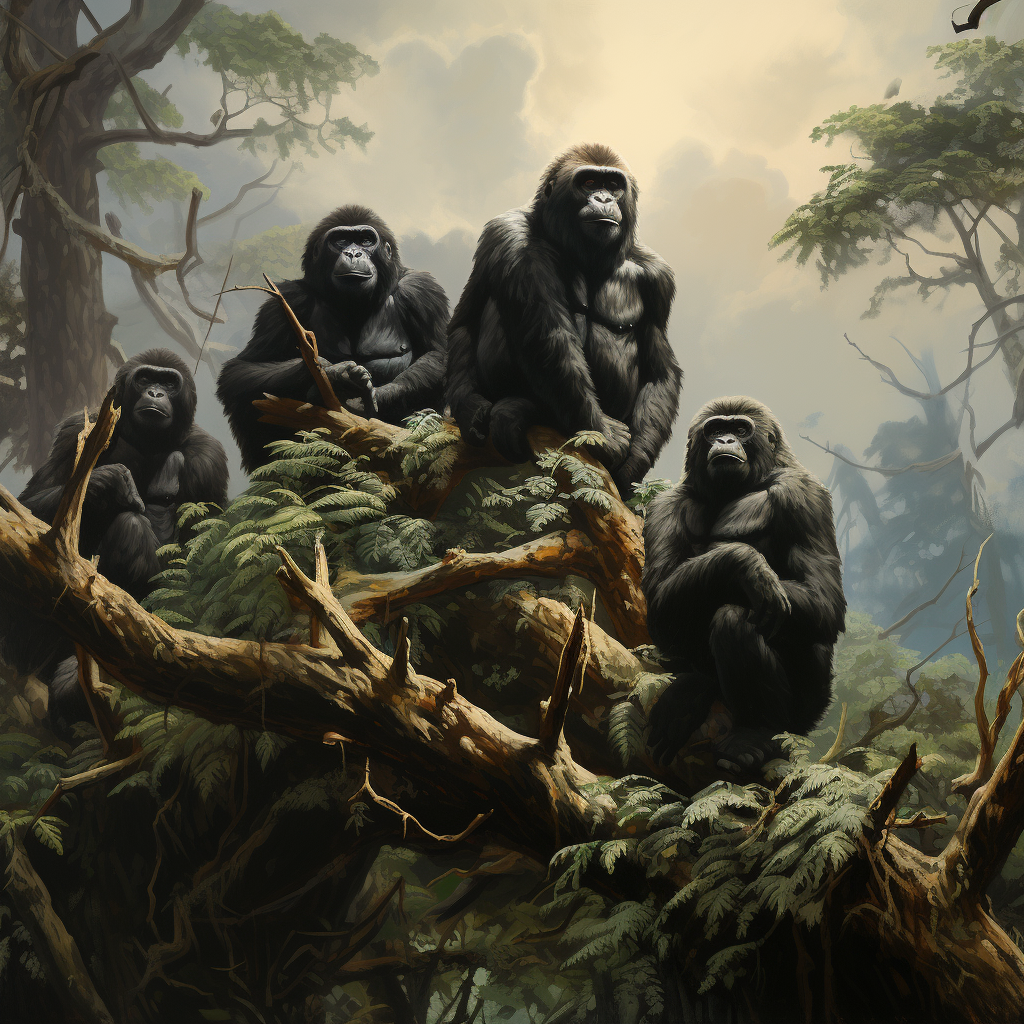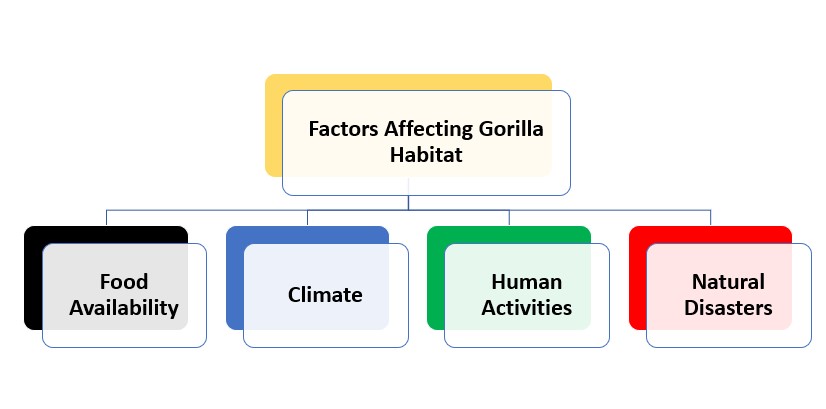
Gorillas – the majestic creatures of Africa’s dense forests – have long captured people’s hearts and minds. Where can you find them?
Central and west Africa is where they call their home. Uganda, Rwanda, and the Democratic Republic of Congo are the countries where you can spot these incredible apes. Each offers a unique experience to those ready to go on a gorilla trekking journey.
Key Takeaways
- The majority of gorillas are located in the forests of Central Africa, specifically in the countries of Cameroon, Gabon, Republic of Congo, and Democratic Republic of Congo.
- The two species of gorillas, the western gorilla and the eastern gorilla, have different distribution patterns within this region.
- Western gorillas are primarily found in the western part of Central Africa, including Cameroon, Republic of Congo, and Gabon.
- Eastern gorillas are mainly found in the eastern part of Central Africa, particularly in the Democratic Republic of Congo and parts of Uganda and Rwanda.
- The dense rainforests of Central Africa provide the ideal habitat for gorillas, as they offer abundant food sources and protection from predators.
- Gorillas are highly endangered due to habitat loss, poaching, and disease outbreaks, making conservation efforts crucial for their survival.
- Efforts to protect gorillas and their habitats include establishing national parks, implementing anti-poaching measures, and promoting sustainable tourism.
- Ecotourism has emerged as a valuable tool for gorilla conservation, as it provides economic incentives for local communities to protect gorilla populations and their habitats.
- Collaborative efforts between governments, conservation organizations, and local communities are essential for the long-term conservation of gorillas.
- Continued research and monitoring of gorilla populations are necessary to better understand their behavior, ecology, and the threats they face, in order to develop effective conservation strategies.
Where Gorillas are Found?
Gorillas reside in the central and eastern parts of Africa, such as Uganda, Rwanda, and Congo. They love the lush, tropical rainforests there, which provide them with food and shelter.
In Uganda
Uganda is the perfect place to find mountain gorillas. Bwindi Impenetrable National Park and Mgahinga Gorilla National Park are the best spots.
Here, you can get close to these gentle giants in their natural habitat.
In Rwanda
In Rwanda, Volcanoes National Park is a must-visit destination. It’s full of stunning views and habituated gorilla groups. Virunga National Park in the Democratic Republic of Congo is known for its incredible landscapes and diverse wildlife.
Types Of Gorillas To Be Located

These majestic creatures have two species:
- Mountain
- Lowland
Mountain Gorillas
Mountain gorillas hang out in Bwindi Impenetrable National Park and Mgahinga Gorilla National Park in Uganda, as well as Volcanoes National Park in Rwanda.
Lowland Gorillas
As for lowland gorillas, they like to chill in Congo’s forests.
Factors Affecting Gorilla Habitat

Gorillas are affected by their habitat conditions. Food availability, climate, human activities, and natural disasters all shape gorilla habitat.
Let’s look at the table:
| Factors | Description |
| Food Availability | Gorillas eat leaves, stems, fruits, and bamboo shoots. Food sources affect gorilla populations. |
| Climate | Gorillas need certain temperatures and precipitation. Climate change can disrupt gorilla survival. |
| Human Activities | Deforestation, poaching, and the bushmeat trade damage gorilla habitats and reduce their numbers. |
| Natural Disasters | Wildfires or volcanic eruptions can damage gorilla habitats, causing displacement or death. |
Apart from these factors, certain areas are national parks or protected areas to conserve gorillas. Conservation efforts involve local communities, for sustainable management.
WWF says mountain gorillas are critically endangered with only around 1,000 individuals in the wild.
This means conservation measures are needed to protect the species and its habitat. Gorilla trekking and experiences are a wild adventure. They show the majestic beauty of these creatures.
Considerations To Take For Gorilla Trekking
Gorilla trekking is a popular activity for visitors here. A permit grants access to designated parks with habituated groups. Bwindi Impenetrable Park in Uganda, Volcanoes Park in Rwanda, and Virunga Park in the Congo have visitor infrastructure.
Gorilla trekking is a huge attraction among tourists. To protect these amazing animals, visitors must get a permit for their tours.
- When planning a gorilla trekking trip, the best time to go is either June-September or December-February.
- During these dry seasons, you have a higher chance of seeing gorillas near visitor infrastructure.
- Venturing into the gorilla trekking realm gives an awesome chance to behold these grand beasts in their native habitat.
For a better chance of spotting gorillas, visit during the dry seasons. This is when food is scarce and they stay with their family groups. Good fitness is essential as treks can last several hours and be challenging.
Here’s what to keep in mind when starting a gorilla trekking journey:
Get Ready for the Adventure
This exciting experience needs physical fitness and staying power. The trek could take several hours, and going through thick woodland ground may bring difficulties. But, the joy of coming across these spectacular primates outweighs the exertion required.
Have a Trekking Permit
Experienced park rangers or guides lead these tours, and they know all about gorilla behavior and habitats.
To guarantee sustainable tourism practices and guard the gorillas, permits are obligatory for gorilla trekking. These permits not only limit the amount of travelers per day, but also add to preservation attempts and aid local communities living close to the gorillas’ habitats.
Guided by Professionals
Trained guides take visitors through the woodlands in search of habituated gorilla groups. These knowledgeable guides own comprehensive knowledge of gorilla behavior, which develops the overall experience by offering insights into their social mechanics and environmental value.
Be Aware of Timing
Planning your trip during the dry seasons is sensible as it allows simpler navigation through mucky trails. Optimal times for gorilla trekking can change depending on climate conditions, visitor infrastructure, and access to national parks such as Uganda’s Bwindi Impenetrable National Park or Rwanda’s Volcanoes National Park.
Engaging in this once-in-a-lifetime venture leaves no place for remorse. Don’t miss out on this amazing opportunity to witness one of our planet’s most amazing species up close. Reserve your trip now and make memories that will last forever!
Conclusion
Each country provides a unique experience. Uganda has dense forests and rugged terrain. Rwanda has volcanoes and mountain gorillas. The Congo has the largest population of lowland gorillas and the Virunga Mountains.Gorillas have made Central Africa as their home.
These countries such as Uganda, Rwanda, and Congo have both mountain and lowland species in different habitats. Tourism supports conservation and local communities. Companies and tourists should prioritize ethical practices. Responsible tourism helps ensure the survival of these endangered species and their habitats.




